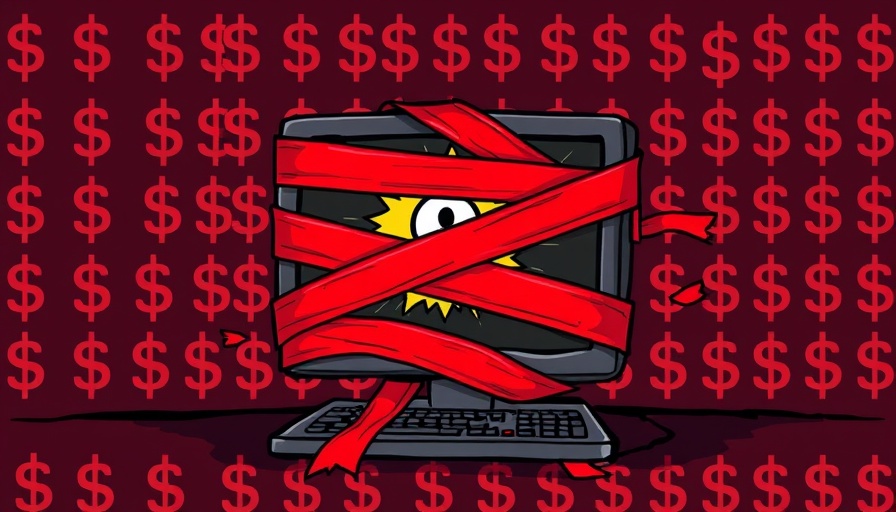
A Bold Message Disrupts Cybercrime
The recent defacement of a leak site operated by the Everest ransomware gang gives rise to unexpected questions about the security and resilience of organized cybercrime. The gang, notorious for its activities since 2020, has gained notoriety for a series of high-profile data breaches, including the theft of sensitive data from organizations like NASA and a cannabis retailer named Stiizy. However, this hack, which replaced their site with the cheeky message, 'Don’t do crime, CRIME IS BAD xoxo from Prague,' disrupts the narrative surrounding these cybercriminal organizations.
Understanding the Everest Gang's Operations
Operating from the shadows, the Everest gang has made headlines by extorting victims through sophisticated attacks. Their model, typical of the ransomware world, earns them millions in ransom payments. Yet, data shows that the overall number of victim payments declined in 2024. Many businesses are becoming more resistant to ransom demands, often opting to seek alternative solutions instead of complying with attackers’ demands.
The Rising Trend of Cybercrime Resistance
Interestingly, the data indicates that while ransom attacks are on the rise, companies are increasingly prioritizing cybersecurity measures. A report from cybersecurity experts states that despite evolving threats, an overall drop in payments is a positive sign of standing firm against extortion. This phenomenon showcases a shift towards more proactive defense strategies, signaling to criminal organizations that their tactics may no longer yield fruitful results.
Lessons Learned from this Incident
The defacement of the Everest site not only exposes vulnerabilities within ransomware gangs but also serves as a reminder for businesses to invest in their cybersecurity frameworks. Companies need to understand that even sophisticated attackers face significant risks. Strategies such as ongoing employee training, improved Incident Response Plans (IRPs), and regular security audits are critical in enhancing organizational resilience against potential cyber threats.
Future Insights: The Evolution of Ransomware
As trends continue to evolve in the realm of ransomware attacks, experts predict an increasing sophistication in counter-cybercrime strategies. The ability of law enforcement and private companies to collaborate effectively will be essential in mitigating risks. The surprising event of hacking the Everest gang’s site may encourage further disruption among criminal networks, as existing techniques lose their potency against a more vigilant public and corporate sector.
Reflections on Cybercrime
This incident triggers a broader conversation about the criminal underground and its dynamics. While the Everest gang continues its operations, the hacking of its leak site underscores the potential for chaos within their ranks. The very tools they rely on—the dark web, data leaks, and intimidation tactics—can be turned against them, offering a glimmer of hope for potential victims who might otherwise feel powerless against such organizations.
How Can You Protect Yourself?
For businesses and individuals alike, the message is clear: developing a culture of cybersecurity awareness is paramount. Keeping abreast of the latest scams, practicing safe internet habits, and investing in cybersecurity insurance can all help mitigate risk. Furthermore, never underestimate the power of collective action in holding cybercriminals accountable.
Given all these developments, it’s essential that we remain informed. The tech landscape is continually evolving, and by understanding both sides of the equation, we can equip ourselves for future challenges in this digital age.
 Add Row
Add Row  Add
Add 



Write A Comment